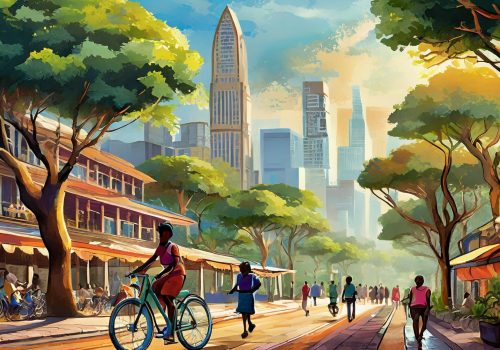Urbanisation in Malawi: MW2063 Pillar #3



Our journey through the pillars of Malawi Vision 2063 ends with urbanisation, the ultimate goal of the vision: a developed, urbanized, and inclusively wealthy nation. This blog will delve into the third pillar, exploring its significance and how it builds upon the previous pillars of agricultural productivity and commercialization and industrialization.
“We shall have world-class urban centers and tourism hubs across the country with requisite modern amenities.”
Urbanisation is the process by which people move from more rural areas to more urban areas. With only three cities in a country of over 20 million people, Malawi has a long way to go in terms of urbanisation. However, this presents a unique opportunity for thoughtful and sustainable urban development. Urbanisation offers considerable opportunities for socio-economic transformation, bringing populations closer together to share resources and fostering innovation and economic growth.
There is a lack of infrastructure of all kinds throughout Malawi. There are few paved roads and the roads that are paved are often poorly maintained. Cities and towns are poorly planned and sprawling. Developing denser and better planned urban centers will allow greater access to key infrastructure and more sustainable growth over the long term.
Tourism has the potential to be a huge boon for Malawi, but there are a number of limiting factors. Malawi is not very well connected to other countries regionally or internationally. Without transport infrastructure, it is hard to attract visitors to experience Malawi’s abundant natural beauty.
MW2063 calls for all cities and towns in Malawi to have master plans that help ensure there is a concentrated thought process that goes into building the necessary infrastructure and amenities. These should include schemes for low and middle income housing to ensure that it is not an afterthought. Additionally, Malawi should develop a mortgage market so that homeownership is more accessible to the average Malawian. Planning should include green spaces that allow for an improved quality of health and life. Towns should be upgraded to cities to decongest larger cities and provide more space for people to build their own civic identities.
The tax base must be broadened and tax law must be updated and reviewed and ensure that taxation should not be a burden on growth.
Local revenue mobilization capacities must be expanded and enhanced. This will allow districts and towns to perform more local works projects. Local councils shall be supported with necessary incentives for developing economic anchor activities or projects. Ultimately, local authorities must be capacitated with skills in planning and implementing infrastructure projects.
While urbanisation offers tremendous potential, it also presents challenges. Rapid and unplanned urbanisation can lead to slums, poor infrastructure, and environmental degradation. To mitigate these risks, Malawi must focus on developing smart and well-planned cities with integrated transportation systems, affordable housing, and accessible social services.
The success of urbanisation in Malawi is closely linked to the first two pillars of MW2063. A productive and commercialized agricultural sector will provide the foundation for rural wealth creation, while industrialization will create jobs and economic opportunities in urban areas. This synergy will drive sustainable urbanisation and reduce the gap between rural and urban areas.
Be sure to check out our other blogs on Malawi Vision 2063 here and stay tuned for more information and analysis of MW2063!
Learn about the inner workings of our Business Development program!
Non-Communicable Diseases like asthma and heart disease can be deadly, and they affect a significant portion of the population in rural Malawi.
As we continue to empower and inspire our communities through sustainable and improved farming practices, we are excited to share an update on our Mwayiwathu Cohort 1 Farmers Club. Last year, we shared an update on the graduation of the Mwayiwathu Cohort 1 club, and as promised, we are back with another update on the club’s progress and achievements.